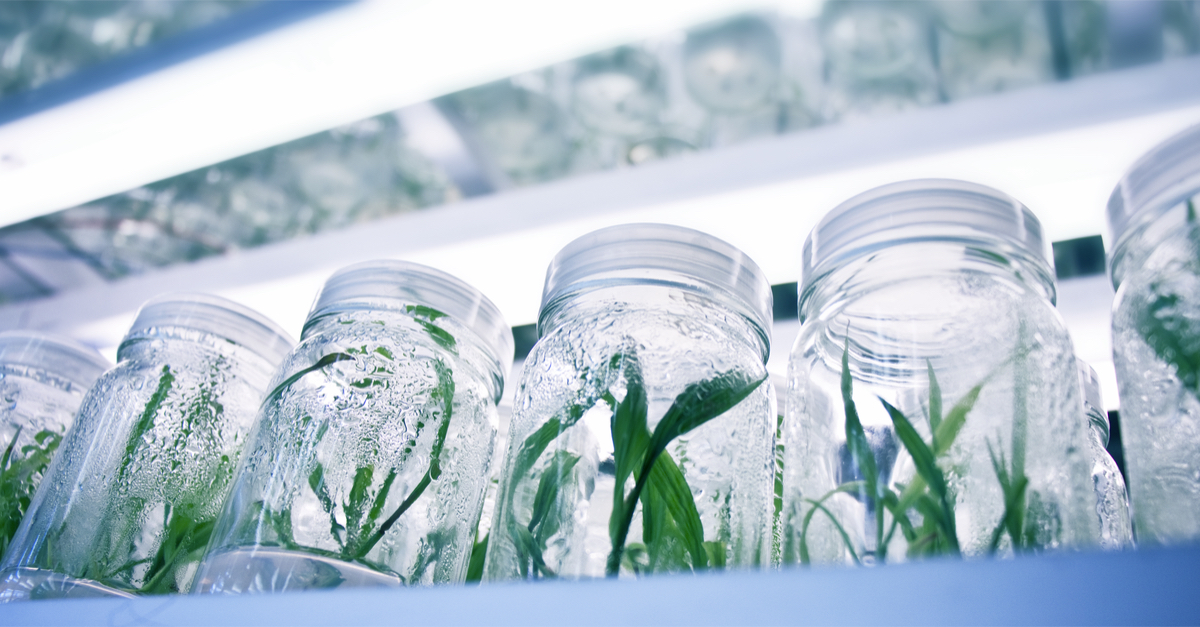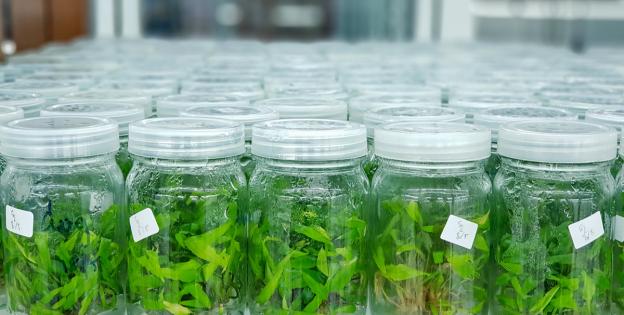- In our last article, we explored micropropagation, an in vitro propagation method for plants that allows to produce a large number of specimens from plant tissues and small plant fragments.
- In today’s article we will look at plant tissue, an in vitro plant propagation method that shares many aspects with micropropagation.
- Keep reading to find out more about tissue culture and its applications for cannabis growing.

What is tissue culture?
Developed some thirty years ago, tissue culture is a collection of in vitro techniques used to reproduce plants under sterile conditions, in a fully equipped laboratory.

Simply put, tissue culture allows to grow an entire cannabis plant from a single cell, a group of cells or tissues or one or several plant organs.
Once selected, the starting material is introduced in a nutritious substrate called agar, which contains variable amounts of vitamins, micronutrients, macronutrients and sucrose depending on the variety you want to propagate.
Micropropagation is actually a tissue culture technique, this is why both methods have much in common. As a rule, micropropagation is carried out using plant tissues and organs in order to ensure a big population of plants is obtained (plants with identic genome = clones). Accordingly, the method is mainly used for large-scale clone production.
Protoplast isolation is another tissue culture method, which involves genetically modifying a plant to meet a specific purpose, allowing to produce both new strains and transgenic plants – the latter with the advantage of being resistant to most diseases and pests. Embryo rescue, in turn, allows to shorten the growth phase, enabling growers to harvest their crops earlier.

All tissue culture methods serve the same purpose, i.e. producing sterile plants that are free from virus and other types of infections. Also, as it allows to fully regenerate virtually any plant species, tissue culture aids the genetic conservation of rare species over time.
The main drawback to tissue culture is that it needs to be performed in a scrupulously clean, fully-equipped laboratory. Because the process requires sterile conditions, a bacteria and virus free environment is key to a successful result. Unluckily, investing in a laboratory is beyond the reach of the average grower.
3 applications of tissue culture
Tissue culture has numerous applications, among which doubled haploidy, protoplast isolation and embryo rescue.

- Doubled haploidy: Doubled haploidy is employed to produce plants from reproductive cells or gametes, which contain a copy of the genetic information of cells in the form of two identical chromosomes – i.e. homologous chromosomes. The reproduction of doubled haploids allows to double the number of chromosomes, obtaining pure individuals with the same information in both chromosomes – i.e. homozygous individuals.
- Protoplast isolation: Protoplasts are cells which have had their wall removed. These are obtained from explants – pieces of plant tissue typically extracted from the edges of young leaves – and are fused together for creating new strains with traits that show cytoplasmatic inheritance. As already mentioned, the good thing about protoplast isolation is that it allows to enhance certain traits of the plant for a specific purpose, like strengthening the immune system to produce a specimen that is resistant to most pathogens. The method is also very valuable for innovation and research in the field of strain engineering.
- Embryo rescue: This technique involves the in vitro growth of an early embryo in order to protect it from the growth inhibitors present in maternal tissues (in interspecific cross breeding). The method can also be used for accelerating growth cycles.




Comments from our readers
There are no comments yet. Would you like to be the first?
Leave a comment!Did you like this post?
Your opinion about our seeds is very important to us and can help other users a lot (your email address won't be made public).